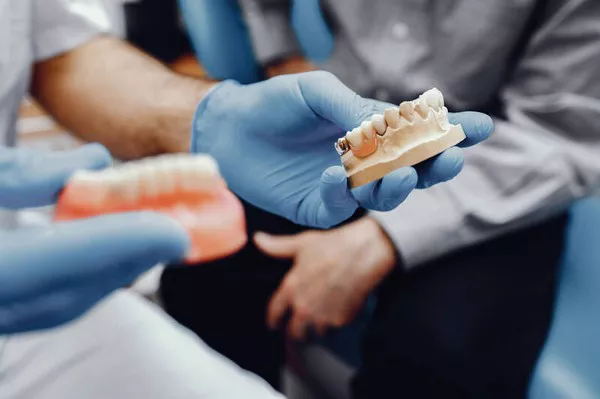Teeth whitening strips are a popular and convenient method for achieving a brighter, more radiant smile. While they can be effective in removing stains and enhancing the whiteness of your teeth, some users may experience tooth sensitivity or discomfort after using them. In this comprehensive guide, we will explore the reasons why your teeth may hurt after using teeth whitening strips, how to manage this discomfort, and when it’s essential to seek professional dental advice.
Understanding Teeth Whitening Strips
Teeth whitening strips are thin, flexible pieces of plastic coated with a peroxide-based gel. They are designed to be placed directly on the surface of your teeth for a specified period. The primary purpose of teeth whitening strips is to:
Remove Stains: Teeth whitening strips contain bleaching agents, usually hydrogen peroxide or carbamide peroxide, which help break down and remove surface stains on your teeth.
Enhance Appearance: By reducing discoloration and stains, whitening strips can improve the overall appearance of your smile, making your teeth look whiter and brighter.
Potential Causes of Tooth Sensitivity or Discomfort After Using Whitening Strips
While teeth whitening strips can deliver impressive results, they can also lead to tooth sensitivity or discomfort for some users. Several factors may contribute to this post-whitening discomfort:
Bleaching Agents: The active bleaching agents in whitening strips can penetrate the enamel of your teeth to break down stains. This process can temporarily open up tiny pores in your enamel, leading to sensitivity.
Concentration of Peroxide: Whitening strips are available in various peroxide concentrations, with higher concentrations typically producing more significant results but also increasing the risk of sensitivity.
Duration of Use: Leaving whitening strips on for extended periods, using them too frequently, or using stronger formulations can increase the likelihood of sensitivity.
Enamel Thickness: Individuals with thinner enamel may be more prone to experiencing sensitivity after using whitening strips, as there is less enamel to protect the dentin (the sensitive layer beneath the enamel).
Existing Dental Issues: If you have pre-existing dental conditions, such as gum recession, tooth decay, or exposed dentin, you may be more susceptible to sensitivity when using whitening strips.
Improper Use: Failing to follow the instructions for using whitening strips, such as leaving them on for too long or applying them incorrectly, can contribute to sensitivity.
Managing Tooth Sensitivity After Using Whitening Strips
If you experience tooth sensitivity or discomfort after using teeth whitening strips, there are several steps you can take to alleviate the discomfort:
Use Toothpaste for Sensitive Teeth: Switch to a toothpaste specifically designed for sensitive teeth. These toothpaste options contain ingredients that can help reduce sensitivity.
Over-the-Counter Pain Relievers: Over-the-counter pain relievers like ibuprofen or acetaminophen can help reduce pain and inflammation. Follow the recommended dosage instructions and consult with your healthcare provider if you have any concerns.
Reduce Whitening Frequency: If you are using whitening strips daily, consider reducing the frequency to every other day or as recommended on the product packaging.
Shorter Application Time: If your whitening strips require a longer application time, try reducing it to the minimum recommended time to minimize sensitivity.
Follow Instructions: Always follow the manufacturer’s instructions for using whitening strips. Overusing or misusing them can increase the risk of sensitivity.
Consult Your Dentist: If the sensitivity persists or worsens, it’s crucial to consult your dentist. They can assess your dental health, offer professional advice, and recommend potential treatments or desensitizing options.
When to Seek Professional Dental Advice
While post-whitening sensitivity is often temporary and manageable, there are situations where you should seek professional dental advice:
Severe Pain: If you experience severe or prolonged pain that is not relieved by over-the-counter pain relievers, contact your dentist immediately.
Signs of Gum Irritation: If you notice signs of gum irritation or damage, such as bleeding, swelling, or soreness, consult your dentist for evaluation.
Prolonged Sensitivity: If tooth sensitivity lasts for an extended period, such as several weeks, it’s essential to consult your dentist to rule out underlying issues.
Existing Dental Problems: If you have pre-existing dental conditions, consult your dentist before using teeth whitening strips to assess whether they are safe for your dental health.
Conclusion
Teeth whitening strips can be an effective way to achieve a brighter smile, but some users may experience tooth sensitivity or discomfort after use. Understanding the potential causes of post-whitening sensitivity and knowing how to manage it can help you enjoy the benefits of teeth whitening while minimizing any discomfort. Most users find that sensitivity is temporary and subsides after a short period. However, if you have concerns about post-whitening discomfort or need guidance on your dental care, consult your dentist, who can provide personalized advice and treatment options tailored to your needs.
Related Topics:
































